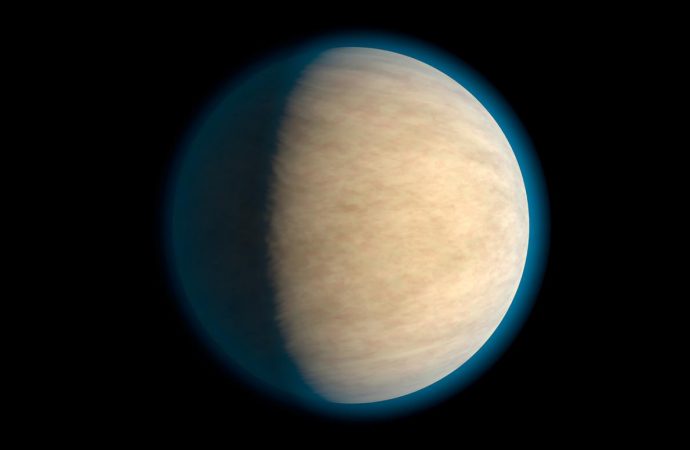If confirmed, the shiny new worlds may help astronomers better understand how strange planets known as hot Jupiters are created.
Planets orbiting other stars are running out of ways to hide.
For the first time, astronomers have used reflected starlight to tease out the possible presence of 60 large, roasted worlds. As those planets traipse around their stars, they act like large alien mirrors and briefly bounce a bit of extra starlight toward Earth, causing a small but measurable increase in their systems’ brightness.
The discoveries still need to be independently confirmed using a different planet-hunting method. But if even some of the worlds are really there, they could have an important story to tell about how such hot, Jupiter-size planets form.
“You see a brightening when the planet moves behind the star because at that point, you’re seeing its day side,” says Yale University graduate student Sarah Millholland, who will present the work Friday at the Kepler and K2 Science Conference.
The 60 possible planets were hiding among nearly 200,000 stars in the patch of sky that NASA’s Kepler spacecraft stared at for four years. Though the spacecraft has spotted more than 2,300 confirmed worlds among those stars, it can’t see all of the ones that must exist.
That’s because the probe orbits the sun, and distant planetary systems ordinarily need to be aligned just right so that planets pass between their stars and the spacecraft. Kepler can then detect a planet as it briefly blots out a portion of its star’s light. However, this configuration only occurs for about 10 percent of hot Jupiters.
“With the transit method, we’re still biased to systems that are aligned in a particular way, which means we don’t have the ability to explore the vast majority of planets in the galaxy,” says Caltech’s Courtney Dressing. “Sarah has found a way to identify more planets, even those in systems that are misaligned.”
The catch: Those planets need to be either really big, or really shiny.
“You need something that has a large enough radius to reflect the light,” Millholland says. Or you need a small but abnormally reflective world, something like the barbecued lava world called Kepler-10b.
Nice and Shiny
Working with Yale’s Greg Laughlin, Millholland devised a machine-learning approach to tease out the signs of these planets from four year’s worth of Kepler data. Based on previous work, Millholland and Laughlin knew what they were expecting to see. Plus, several planets—including a transiting hot Jupiter in the Kepler field—do indeed reflect their star’s light.
So, using thousands of synthetic data sets, as well as observations from those known planets, Millholland and Laughlin trained an algorithm to sift through the massive Kepler data set and search for shiny planets.
Millholland ran the program on 142,630 Kepler stars, looking for large, non-transiting worlds that orbit their stars in less than one Earth-week. Sixty possible hot Jupiters jumped out—roughly four times as many as Kepler found via its usual transit method.
Hot Jupiters are rare, with observations suggesting they orbit only one percent of sunlike stars. It’s unlikely that this new way of finding them will dramatically alter conceptions about how common they are, but it could help scientists learn more about how these strange worlds form: Do they grow up farther away from their stars and migrate inward, or do they tend to form right where they are?
“It might really change our conception of whether they’re alone or not—it will tell us whether they’re really, truly, bossy horrible siblings,” Dressing says.
First, though, these planets need to be verified. Avi Shporer, also of Caltech, thinks it’s likely that many of those 60 worlds might not actually exist.
“But even a single detection of a real planet among those candidates will be exciting,” he says, “both scientifically and for improving the efficiency of this young detection technique.”
Source: National Geographic

































Leave a Comment
You must be logged in to post a comment.